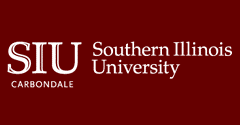Abstract
Spinach (Spinacia oleracea L.) leaves represent an important dietary source of nutrients, antioxidants, and antimicrobials. As such, spinach leaves play an important role in health and have been used in the treatment of human diseases since ancient times. Here the aims were to optimize the extraction methods for recovering antimicrobial substances of spinach leaves, determine the minimum inhibitory concentrations (MICs) of the antimicrobial substances against Escherichia coli and Staphylococcus aureus and finally, evaluate the effects of spinach leaves’ antimicrobials on bacterial DNA using central composite face centered methods (CCFC). The effect of the extracts on both Gram positive and Gram negative bacterial models were examined by scanning electron microscopy (SEM) and random amplification of polymorphic (bacterial) DNA (RAPD). The optimal extraction conditions were at 45°C, ultrasound power of 44% and an extraction time of 23 min. The spinach extracts exhibited antimicrobial activities against both bacteria with MICs in the 60-100 mg/mlrange. Interestingly, SEM showed that treated bacterial cells appear damaged with a reduction in cell number. RAPD analysis of genomic DNA showed that the number and sizes of amplicons were decreased by treatments. Based on these results, it was inferred that spinach leaves extracts exerts bactericidal activities by both inducing mutations in DNA and by causing cell wall disruptions.
Recommended Citation
Altemimi, Ammar B., Lakhssassi, Naoufal, Abughazaleh, Amer and Lightfoot, David. "Evaluation of the antimicrobial activities of ultrasonicated spinach leaf extracts using RAPD markers and electron microscopy." Archives of Microbiology 017 (Summer 2017): 1418-6. doi:10.1007/s00203-017-1418-6.
